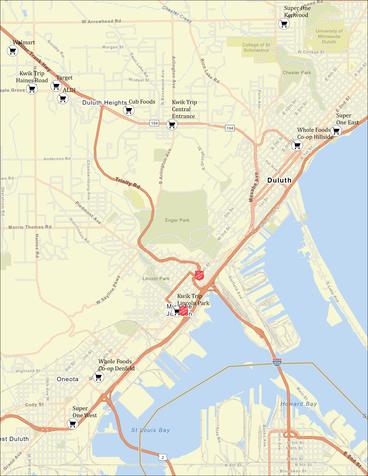Photo courtesy of The Salvation Army
Daniel Ye, one of the BBER’s current undergraduate research assistants, graduates this winter. We asked him what he considered the most interesting project that he had worked on. His reflections are below.
At the BBER, I have been exposed to numerous real-world datasets, including demographic, economic, and social indicators in Northeast Minnesota. I have experienced data acquisition, analysis, visualization, and interpretation through the complete research process. I love how my work has been locally focused, making me feel like part of this community. (I am originally from China.) Among all the projects I was involved in, The Salvation Army Needs Assessment (September 2021) has been the most interesting.
The needs assessment involved The Salvation Army’s current programs and included that the BBER make recommendations for the organization’s future. The requirements included updates to community and program statistics that have changed in the past four years as well as additional feedback from key stakeholders and clients of the organization’s programs and services. The Salvation Army planned to use the study to obtain funding to identify a new location and expand its services.
As a foreigner to Duluth, it was a unique experience to learn through first-hand research about the area that I lived in. For example, by collecting data from the U.S. Census Bureau and ESRI, I learned that Duluth has a much higher percentage of its population below the poverty line than the state (see the table below). The average number of persons living in poverty statewide was 9.7%, while in Duluth it was 18.2%. Much of this discrepancy is driven by high poverty rates in specific Duluth neighborhoods. For example, the Central Hillside, Downtown, and East Hillside neighborhoods all had poverty rates higher than 30%. The poverty rate in the Lincoln Park neighborhood was slightly lower, at 25.5%, but still above the average for the city and state. Even the neighborhood with the lowest poverty rate (Bayview Heights, with 11.1%) was still higher than the state’s.
With the help of UMD’s U-Spatial office, the BBER also assessed the various community factors related to food access and public transportation. One such factor was access to groceries by neighborhood. The figure below shows the distribution of grocery stores in closest proximity to The Salvation Army.
Source: U-Spatial
From the map, we can see that Kwik Trip is the closest store to Lincoln Park, where The Salvation Army is currently located. While Kwik Trip does not carry nearly as extensive of a food selection as a regular grocery store, it does offer fresh produce, dairy, bread, and basic needs. The Whole Foods Coop in Denfeld and Super One Foods in the Spirit Valley neighborhood are approximately two and a half miles away from Lincoln Park, while the Cub Foods grocery store near the Miller Hill Mall is approximately four miles away from Lincoln Park.
In addition to the research on the community needs and assets, the BBER also designed surveys to get feedback from The Salvation Army’s clients. Positive feedback included compliments to the staff, appreciation for the Rookie Basketball program, and gratitude for the efforts and services of The Salvation Army. Negative feedback included complaints about the bus connection to the facility, inconvenient parking, and both a cramped location and lack of protection against COVID-19 in the Rookie Basketball program.
Through getting involved in the project, I learned so much about the demographic and socioeconomic factors of Duluth. The project also allowed me to understand how a charitable organization works and how it makes a difference to the lives of local people. I’m honored to have been part of the study that contributes in some small way to possible positive changes in the community where I have lived, even if only temporarily.

